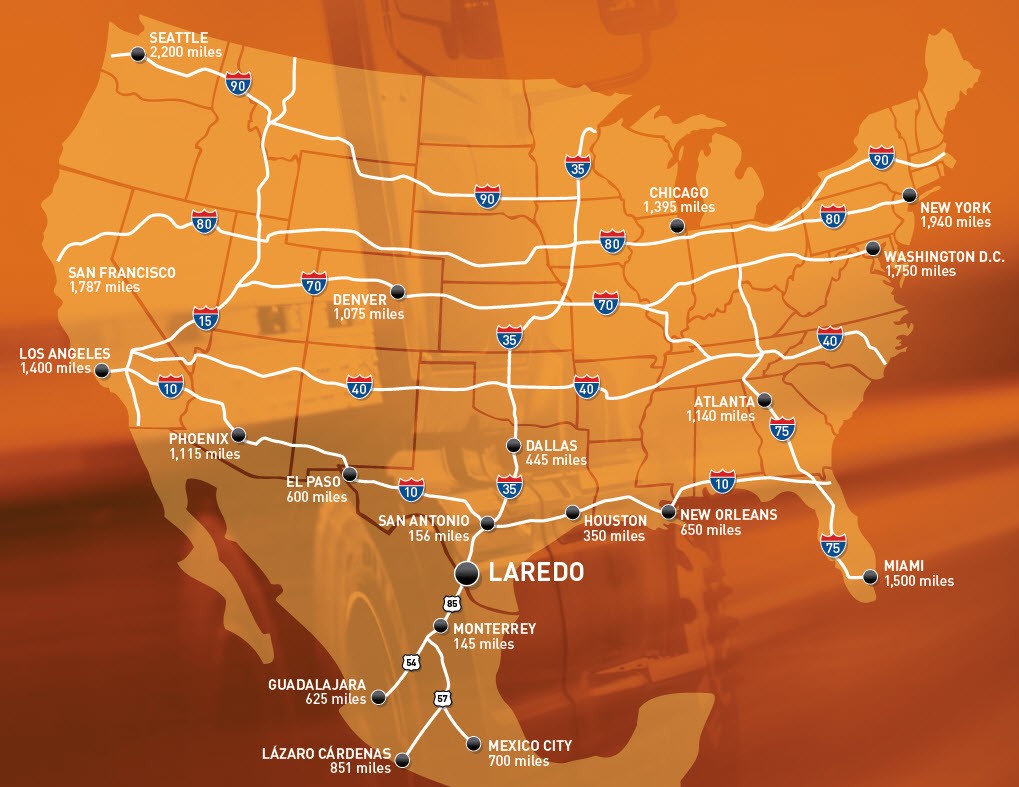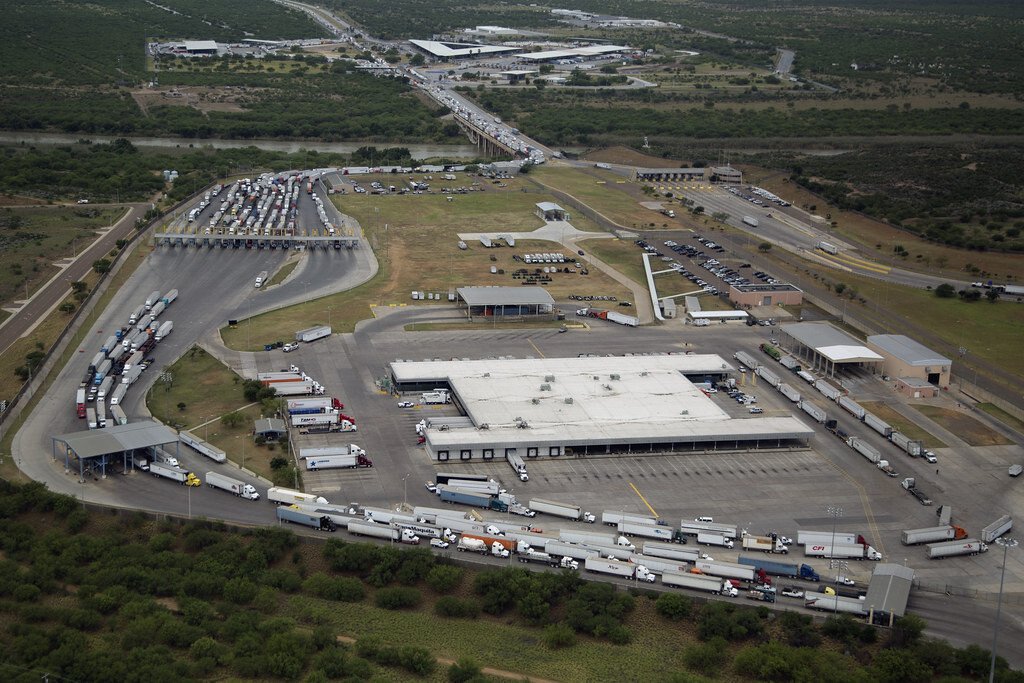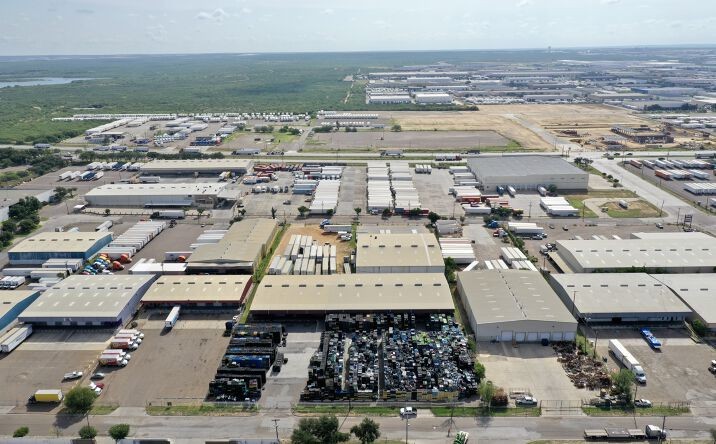
Over the past few years, the Laredo port has gained attraction from several manufacturers in USA and Mexico. Thanks to the shift in the global economy, companies are moving manufacturing from China and other Asian countries into Mexico, creating a new supply chain allocation with its pros and cons.
Just to give you an idea, 5.5 million trucks entered through Laredo, Texas in 2022 alone. Goods traded between Mexico and USA reached almost $800 billion USD as of last December, showing an increase of 18% from the previous year according to the Wall Street Journal.
In Oct 2022, 27 billion dollars moved through Laredo port. That month it overtook the trade volume from each of the seaports of Long Beach and Los Angeles.
Laredo is prime to become one of the world’s most important land ports, and we can currently see the congestion of trucks wanting to cross daily. Trucks at the border can wait hours in line to cross, thus delaying product delivery times.
According to US census Data, more than $800 million dollars passed daily through this land port in 2022, from auto parts and household appliances to avocados and electronics. Laredo crossings represents 40% of trade between Mexico and USA.
But, why Laredo?

When looked at the north America map, it sits right in the middle of the US, so it is strategically positioned. Companies can distribute their products to the east coast or to the west coast in the same estimated time.
Laredo isn’t the only border town, there is also Tijuana (which borders San Diego) and Ciudad Juarez (which borders El Paso) and both are huge border crossing cities, yet Laredo is receiving the most activity.
The city is the closest land port to most of Mexico´s manufacturing Hubs. Like the State of Nuevo Leon, which includes Monterrey. Loading a truck in Monterrey represents a 2.5-hour drive to Laredo. That product will be unpacked in a Laredo warehouse, then it will get repacked into outbound trucks and will end distributed to the rest of the USA.
If you manufacture in Mexico, you can get your finished product to the US in under 24 hours by truck, versus the 2 to 6 weeks it currently takes if the same good is shipped from Asia.
Some automotive and electronic products can cross the Mexico/US border 3 to 6 times before the finished good can be ready for the final consumer.

What is the Nearshoring Strategy?
Soaring shipping rates, the trade war between China and USA, and geopolitical uncertainty caused by Russia invasion helped fuel the nearshoring trend, which essentially implies to be closer to your customers and suppliers, plus Mexico has 12 free trade agreements with over 45 countries, more than the United States.
The expansion of trade in Laredo is fueled by the surge of FDI in Mexico over the past 20 years. Last year, Mattel expanded its plant in Monterrey into its largest facility worldwide, as well as Lego, and recently Tesla announced it will build its massive gigafactory in Monterrey. The biggest in the world so far. Other big firms have been moving or expanding plants in Monterrey recently, such as Man Wah (China), Hisense (China), Amazon, Stanley Black & Decker, and many others.
The Mexican government said more than 400 companies have shown interest in moving production from Asia to Mexico. And such influx in demand requires attention.
Large infrastructure build outs are on the way in Laredo, as well as in the border between the state of Nuevo Leon and Texas. The Colombia port is expanding in order to meet demand of trucks going into Monterrey. The government will expand the world trade bridge from 8 lanes to 16 lanes, and rail company Canadian Pacific/Kansas City broke ground on a project that will double the capacity of a rail bridge in the Rio Grande River.

This also means greater demand for warehouse space. Currently there are 3.8 million sqf of warehouse under construction in Laredo, a 22% increase in space since 2012.
This is creating job opportunities in Mexico and in the US as well, because certain products require more skilled workforce for final assembly that cannot be as easily obtained in Mexico as in the US.
Some executives and economists say that China will still remain a dominant supplier for many goods, yet it is expected that this increase in FDI per year (nearshoring trend) will last at least until 2030, which means trade passing through Laredo is projected to keep growing.